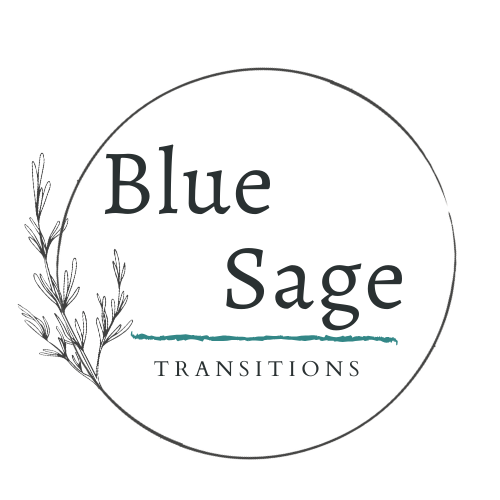Stop looking into the lake of life and seeing yourself. Look into the lake of life and see God.
One year ago, I turned more directly toward the end of my marriage and, because I love a good memoir, Michael Singer’s The Surrender Experiment. As I wrote at that time,
God in My Own Backyard. Photo Credit to @kswaynewilson
The wisest choice I can see is to surrender—to let go of the controls—and breathe my way through the unfolding of whatever comes next. I'm still in the fledgling stage of trusting that the universe is a friendly place and am committed to growing that faith.
A year later, I am divorced and finding my way into a new life chapter as the half-time single parent of a sparkling, precocious six-year-old daughter. Out in the world beyond my home, Ukraine is fighting tooth and nail for democracy, and the Supreme Court is preparing to overturn Roe v. Wade. It is definitely not a time to get lost in self-absorption, which, not incidentally, is a key feature of shame.
I recently heard an impressive talk by Chris Germer on healing shame with self-compassion. He wisely pointed out that shame is not the issue; avoiding it is. When no mindful observer exists to address the shame, it runs on autopilot, contaminating our inner body sensations, external physical expressions, thought processes, emotions, and behaviors. Unmitigated shame is, in short, a self-centered shit show. It is also at the heart of the narcissism—the cult of innocence to borrow from Richard Rohr—parading around the U.S. political stage, in my most humble opinion.
The solution, however, is not to heap more poo on the steaming pile. Rather, kindness and a sense of common humanity are the medicine. Like it or not, we are all imperfect, mortal, and vulnerable. But how to bring these ideas to life and embody them?
I think we need to back up and remember that shame is not some self-created monster. It is the result of relational wounding. So treating it like a problem to be solved simply does not work. Seeing shame as a solution to a problem, on the other hand, has been quite impactful in my life and the lives of so many others with whom I’ve come into contact. If I were to crystallize the deeper problem driving shame and our avoidance of it, I would say we are smack dab in the middle of a love deficit. Or a briar patch. As Brene Brown explained it,
I remember when I first started seeing Diana my therapist, I was… Golly, I was 10 years sober and I’m 25 now, so 15 years ago. And I was sober, but I was really leaning into food and work. And so I had just given up some of the food stuff and I was really working on work. And I remember saying to her, “I need some medicine. I need some medicine because I got nothing now. I got nothing.” And she said, “What do you mean?” And I said, “I’m like a turtle in a briar patch, and you took away my Bud Light, and you took away my cigarettes, and now you’ve taken away the apple fritter, and now you’ve taken away the 70 hours of work. I’m a turtle without a shell in a briar patch. Everywhere I turn, it hurts. I’m going to need something.” And she goes, “Have you thought about getting out of the fucking briar patch?”
Too many of us have been trudging through a love desert strewn with thorns. So we turn to control or numbing or shame or any number of additional strategies to make it through the day. But what would happen if, as Germer advises, we prioritized reconnecting with the universal, innocent human wish to be loved? Could we stop looking everywhere for our own reflection and connect instead to the miracle that is life?
Backdraft. Photo Credit to FireEngineering
As a body-based trauma therapist, I’m quick to point out that until there’s enough emotional and physical safety in our environment, we likely will be too vigilant to let in love, let alone offer it inwardly. There’s also the reality that as we begin to experience unconditional love, “we discover the conditions under which we were unloved.” Germer aptly calls this distress backdraft. And still, I am growing more confident in saying to the clients who are no longer actively in the throes of danger and active wounding, how about we try letting go of the controls rather than trying to manage everyone and everything to avoid pain? In her riveting memoir about healing complex PTSD, Stephanie Foo shared this wisdom from her therapist,
According to Dr. Ham, complex PTSD further clouds our perception of basic sensorial instincts. We are jumpy creatures, expectant of danger and conflict, and so that’s what we see. We’re often blind to what is actually happening. So Dr. Ham advocates for what the Dalai Lama calls “emotional disarmament—to see things realistically and clearly without the confusion of fear or rage.” For every narrow, fear-based C-PTSD reading, Dr. Ham said, there is a wider truth—layers and layers of truths. Of course it isn’t possible to always know that entire truth, because the people we love might not even be aware of that truth themselves. What is important is to approach all of these interactions with curiosity for what that truth is, not fear. He said I should approach difficult conversations with an attitude of “What is hurting you?” instead of “Have I hurt you?”
Credit to Melli O’Brien
My own therapist is helping me to identify when my perception has become fixated on one pixel of a much larger masterpiece. Instead of staring at that lake in a self-absorbed, fear-drenched, shame-filled way, I am growing more adept at using curiosity to widen the view on the simultaneously messy and extraordinary life before me. In my most recent session, for example, I told her about a relational trauma in my adolescence. When she tracked my body shrinking into the old, safe cloak of invisibility, she reached her hand out to me. I was able to take a deep breath, reach back, place my hand into hers, and say aloud, for the first time ever, “It really was that bad for me.” I’m still absorbing the relief of that grace, connection, and surrender, which feels so much warmer and relaxed than the story of my inherent unworthiness.
On this journey of learning to love ourselves and this life, leave it to the Nagoski sisters to offer some solid practical advice: 1) move toward people who take your well-being as seriously as their own, and 2) interact with fellow givers instead of those who feel entitled to your time, energy, and life. As I enter into new love with a fellow giver, I am experiencing the inner calm that comes from trusting her hand will consistently be there for me to hold. I may finally be getting this “relax and release” mantra that Singer so often declares.
To my fellow seekers who want to see the divinity in the lake of life and also stay in the ring of complex human relationships (aka be an emotionally mature adult), I leave you with a drop of Yung Pueblo’s wisdom and Chanel Miller’s poignant video, which was made almost entirely by women:
“love me well or leave me alone” energy is not selfishness, the point is to reaffirm your value and align with people who are emotionally prepared for a deep connection.



